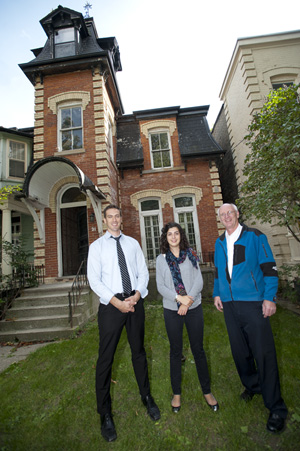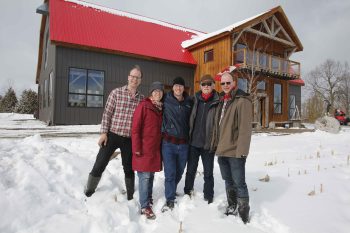Researchers at U of T Engineering and Ryerson University are working to change the way we keep ourselves warm in the winter.
Currently, space heating is the largest contributor to residential energy consumption in Canada at 60 per cent of the total. That’s why Professor Kim Pressnail (CivE), PhD candidate Ekaterina Tzekova (CivE) and Ryerson University Professor Russell Richman (Architectural Science) are looking to cut the number down by 80 per cent.
“We have no option in a traditional home but to heat all areas, even if they are unused,” said Professor Pressnail.
The team is researching a Nested Thermal Envelop Design – a house that’s constructed to employ zonal heating. And thanks to a research grant and contributions from the Ontario Power Authority’s Technology and Development Fund and the University of Toronto, to name a few, the nested thermal envelope design will soon be implemented in a downtown-Toronto home, beginning in January 2013.
The nested thermal envelope design has two key components to recycle heat. First, the home is divided into two different zones, the perimeter and the core. The core is the home’s main living areas, while the perimeter is those less-often used rooms. Secondly, the home would have a small heating unit that cycles heat from the perimeter into the core during the winter season. The heat pump then funnels heat lost to the perimeter back into the core of the home before it is lost to the exterior of the home.
“Ordinarily, single-family homes have just one zone,” said Professor Pressnail. “Here, by having two envelopes, we effectively create two zones in which heat moisture and air movement can be controlled separately.”
Once the nested thermal envelope design is implemented into the Toronto home, the team will elect test subjects to live there, beginning with a member of their research team. Later on, the home will become a residence for visiting professors. The research team will also track behaviour patterns and get feedback from the occupants themselves. Once the data is collected from its inhabitants over the next five years, they will continue their research with a custom-built house.
“The biggest advantage is when energy prices go up or there are interruptions in the supply, it only takes a small amount of energy to keep homes comfortable,” added Professor Pressnail. “Further, this isn’t just about saving energy – it is about reducing our burden on the environment. And a low-energy home that can be operated very efficiently, treads more lightly on this earth.”
The group’s preliminary findings were published in the November 2012 issue of Energy and Buildings .



